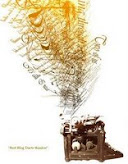I have mentioned before that many artists from the late-1800s were inspired by Japanese art. The influence of Japanese art on European and American art is called Japonism. I thought I’d tell you a bit more about it toady.
For a long time, Japan didn’t trade with Europe or America. They didn’t buy or sell food, fabrics, or anything else, including works of art. In the mid-1800s things changed in Japan. A new government came into power which allowed western ships into the country. And in 1868 Japanese ships began to take goods to Europe and America.
During this time, artists especially in France wanted to break away from traditional styles of art. When they saw Japanese art, many artists were struck by the bright colors, off-centered placement of subjects, and curved lines. Japanese artists cared about creating beautiful art that brought out emotion in the viewer. They did not care as much about creating realistic scenes.
For a long time, Japan didn’t trade with Europe or America. They didn’t buy or sell food, fabrics, or anything else, including works of art. In the mid-1800s things changed in Japan. A new government came into power which allowed western ships into the country. And in 1868 Japanese ships began to take goods to Europe and America.
During this time, artists especially in France wanted to break away from traditional styles of art. When they saw Japanese art, many artists were struck by the bright colors, off-centered placement of subjects, and curved lines. Japanese artists cared about creating beautiful art that brought out emotion in the viewer. They did not care as much about creating realistic scenes.
Notice the curving lines of Gustav Klimt's Tree of Life.
 Also notice the curved lines and the off-centered subject of Aubrey Beardsley's
Also notice the curved lines and the off-centered subject of Aubrey Beardsley's  Sometimes artists even included Japanese artworks into their own paintings. One example, shown below, is Vincent van Gogh’s Portrait of Pere Tanguy.
Sometimes artists even included Japanese artworks into their own paintings. One example, shown below, is Vincent van Gogh’s Portrait of Pere Tanguy.
 Other artists who where inspired by Japanese art include Mary Cassatt, Claude Monet, and Edgar Degas.
Other artists who where inspired by Japanese art include Mary Cassatt, Claude Monet, and Edgar Degas.Return to main page.








No comments:
Post a Comment